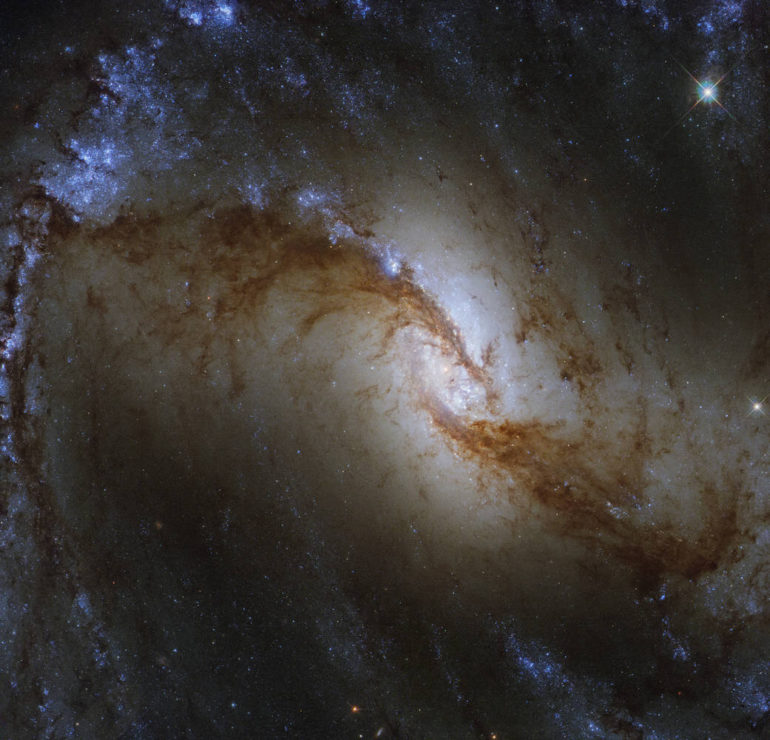At around 60 million light-years from Earth, the Great Barred Spiral Galaxy, NGC 1365, is captured beautifully in this image by the NASA/ESA Hubble Space Telescope. Located in the constellation of Fornax (the Furnace), the blue and fiery orange swirls show us where stars have just formed and the dusty sites of future stellar nurseries.
At the outer edges of the image, enormous star-forming regions within NGC 1365 can be seen. The bright, light-blue regions indicate the presence of hundreds of baby stars that formed from coalescing gas and dust within the galaxy’s outer arms.
This Hubble image was captured as part of a joint survey with the Atacama Large Millimeter/submillimeter Array (ALMA) in Chile. The survey will help scientists understand how the diversity of galaxy environments observed in the nearby universe, including NGC 1365 and other galaxies such as NGC 2835 and NGC 2775, influence the formation of stars and star clusters. Expected to image over 100,000 gas clouds and star-forming regions beyond our Milky Way, the PHANGS survey is expected to uncover and clarify many of the links between cold gas clouds, star formation, and the overall shape and morphology of galaxies.
Image: Hubble spots feathered spiral
Provided by
NASA’s Goddard Space Flight Center
Citation:
Hubble sees swirls of forming stars (2020, October 9)
retrieved 11 October 2020
from https://phys.org/news/2020-10-hubble-swirls-stars.html
This document is subject to copyright. Apart from any fair dealing for the purpose of private study or research, no
part may be reproduced without the written permission. The content is provided for information purposes only.
